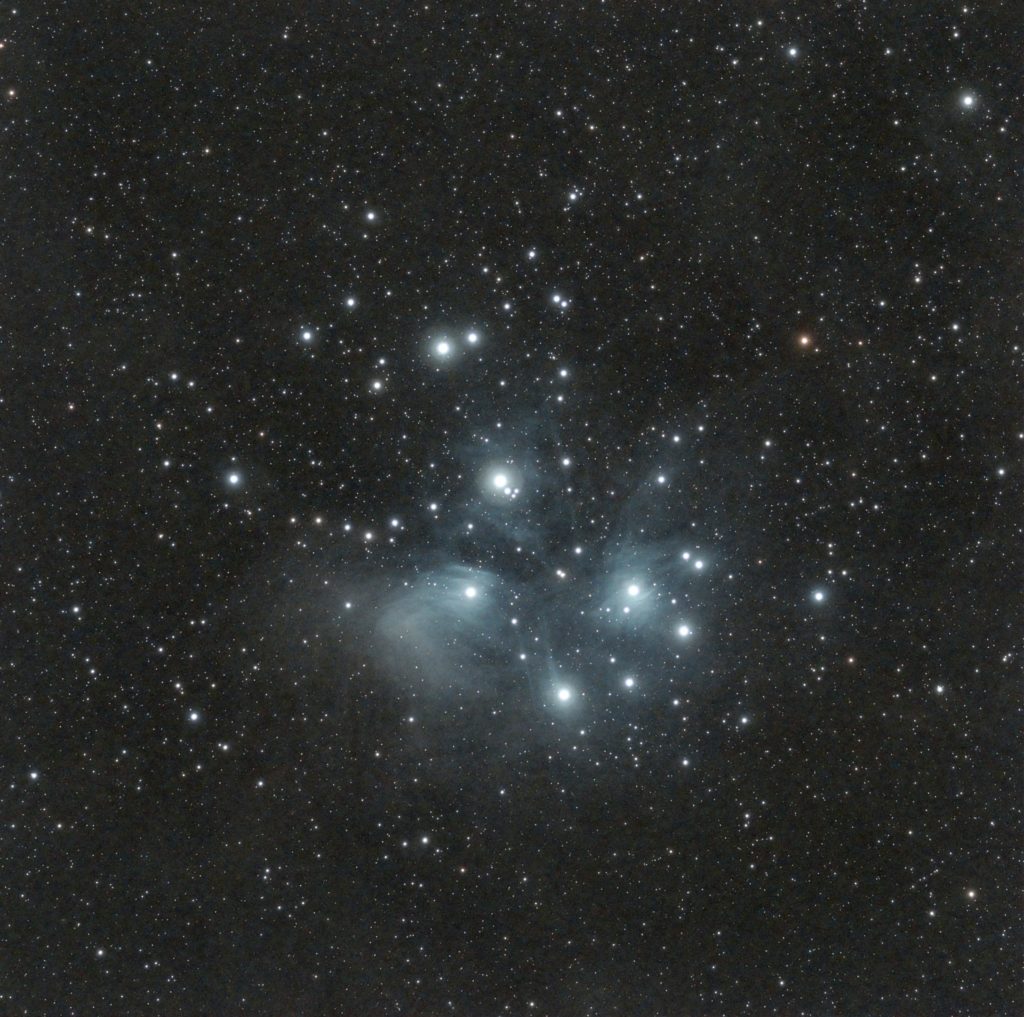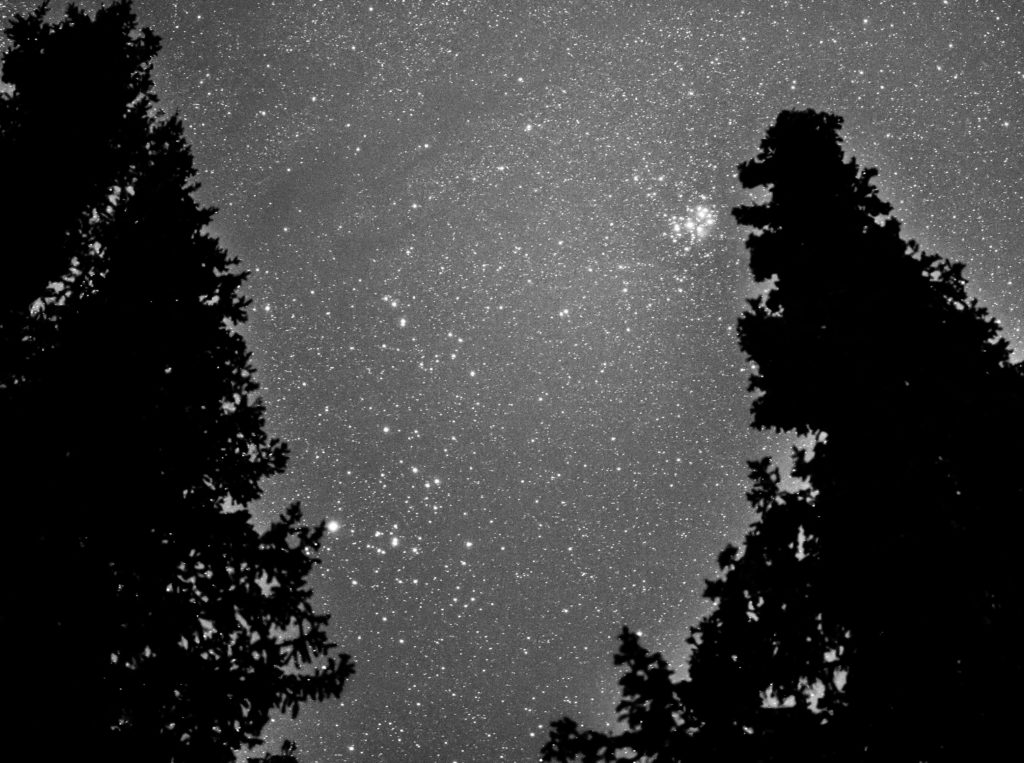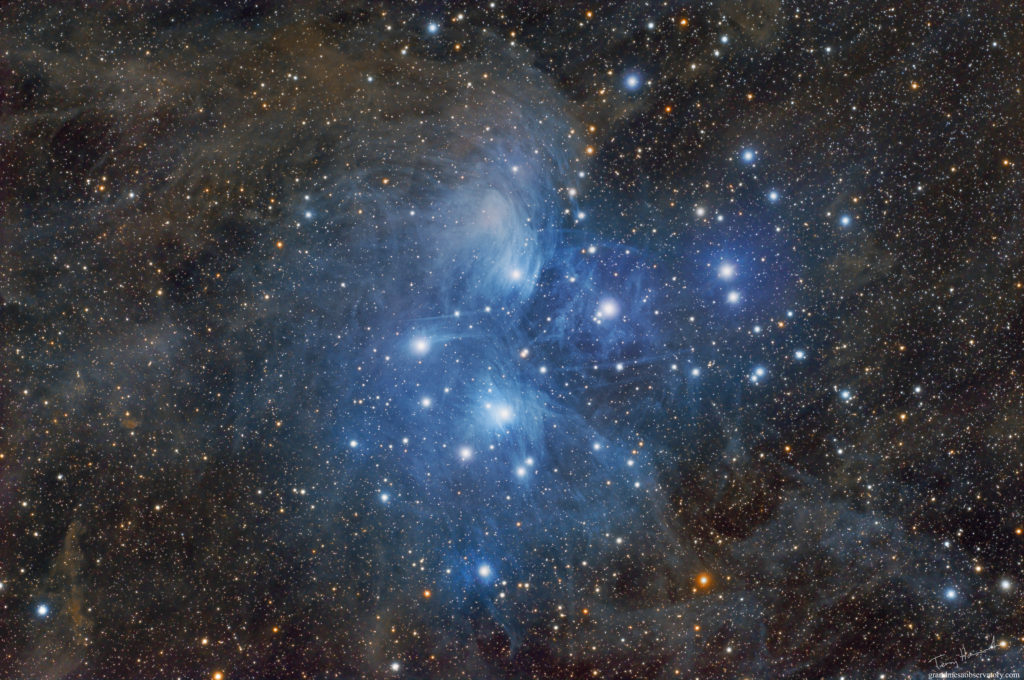
In the months from late November through early March, in both the northern and southern hemispheres, the famous Pleiades star cluster grabs the attention of experienced and untutored stargazers alike. The little dipper-shaped cluster, which is about the width of your little finger held at arm’s length, presents a spectacular sight in binoculars or small telescope where it transforms from a tiny cluster of half a dozen members to an arresting array of couple of hundred of blue-white stars. The cluster itself is a snap to observe, but at its heart lies a far more challenging object, an ethereal reflection nebula created by starlight reflected by fine grains of stardust in an interstellar cloud that the cluster is passing through. [Read more…] about The Merope Nebula
Share This:


